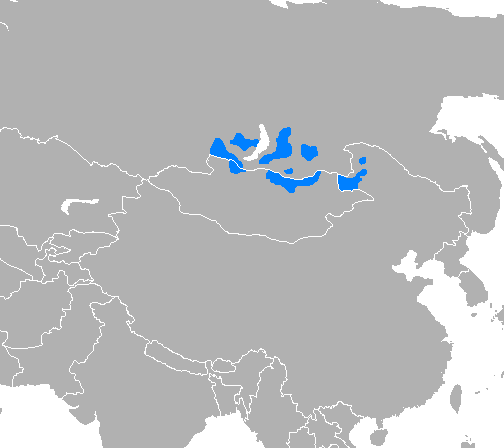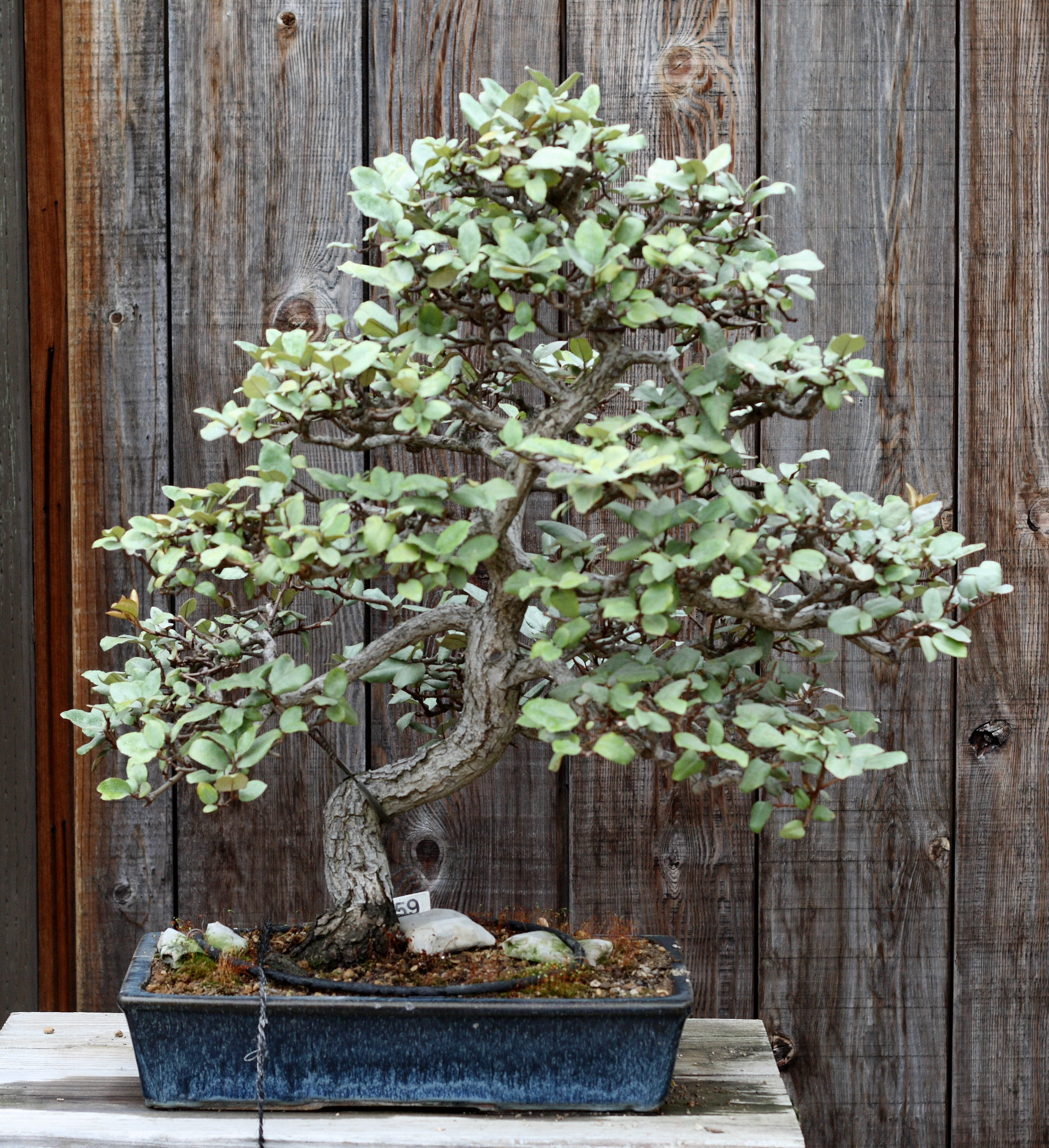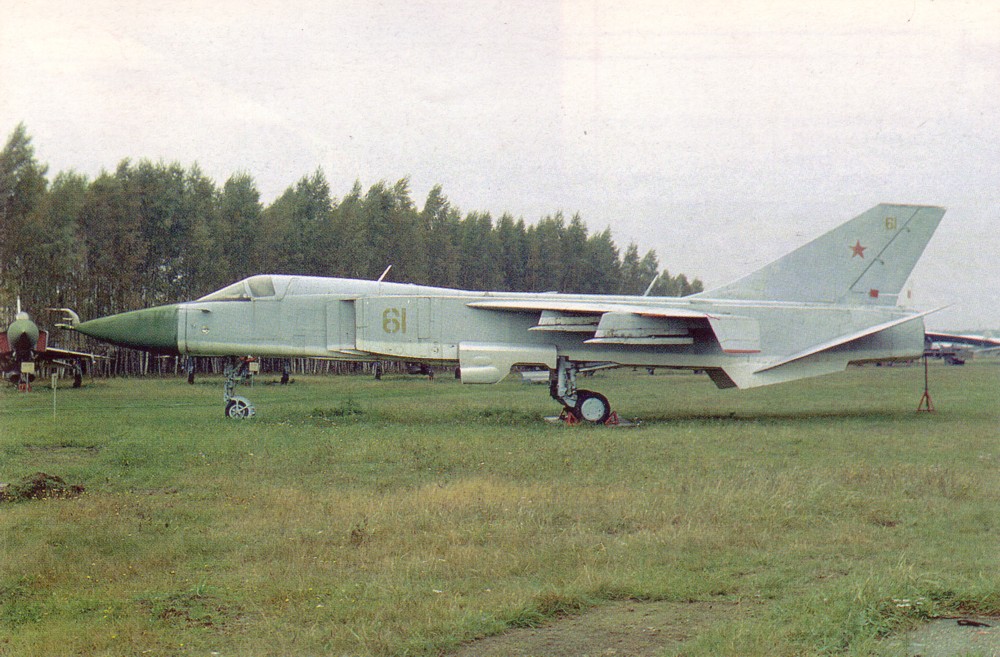|
Dzhida (air Base)
Dzhida (russian: Джида) is a former military air base of the Russian Air Force in Dzhidinsky District, Buryatia, Russia. It was located in the town of Dzhida, and featured a large fighter base with small revetment groups scattered around the airfield. Dzhida has been home to: * 2 Gv BAP (2nd Guards Bomber Aviation Regiment) flying Sukhoi Su-24M aircraft (1969 - 2010). * 21 BAP (21st Bomber Aviation Regiment) flying Su-24 (1969 - 1983). The airfield's name has sometimes erroneously appeared as Eleagnus, the Russian form of the Latin name for the plant '' Elaeagnus'', known as ''dzhida'' in Russian. The name Dzhida is not derived from the ''Elaeagnus'' plant, but from the Buryat language term ''ƶede'', meaning copper Copper is a chemical element with the symbol Cu (from la, cuprum) and atomic number 29. It is a soft, malleable, and ductile metal with very high thermal and electrical conductivity. A freshly exposed surface of pure copper has a pinkis .... Ref ... [...More Info...] [...Related Items...] OR: [Wikipedia] [Google] [Baidu] |
Dzhida, Republic Of Buryatia
Dzhida (russian: Джида; bua, Жада / Зэдэ, ''Jada'' / ''Zede'') is a rural locality (a selo) in Dzhidinsky District, Republic of Buryatia Buryatia, officially the Republic of Buryatia (russian: Республика Бурятия, r=Respublika Buryatiya, p=rʲɪsˈpublʲɪkə bʊˈrʲætʲɪjə; bua, Буряад Улас, Buryaad Ulas, , mn, Буриад Улс, Buriad Uls), is ..., Russia. The population was 3,178 as of 2017. There are 34 streets. Geography Dzhida is located 65 km east of Petropavlovka (the district's administrative centre) by road. Dyrestuy is the nearest rural locality. References Rural localities in Dzhidinsky District {{Buryatia-geo-stub ... [...More Info...] [...Related Items...] OR: [Wikipedia] [Google] [Baidu] |
Revetment
A revetment in stream restoration, river engineering or coastal engineering is a facing of impact-resistant material (such as stone, concrete, sandbags, or wooden piles) applied to a bank or wall in order to absorb the energy of incoming water and protect it from erosion. River or coastal revetments are usually built to preserve the existing uses of the shoreline and to protect the slope. In military engineering it is a sloped structure formed to secure an area from artillery, bombing, or stored explosives. Freshwater revetments Many revetments are used to line the banks of freshwater rivers, lakes, and man-made reservoirs, especially to prevent damage during periods of floods or heavy seasonal rains (see riprap). Many materials may be used: wooden piles, loose-piled boulders or concrete shapes, or more solid banks. Concrete revetments are the most common type of infrastructure used to control the Mississippi River. More than of concrete matting has been placed in river ... [...More Info...] [...Related Items...] OR: [Wikipedia] [Google] [Baidu] |
Soviet Air Force Bases
The Soviet Union,. officially the Union of Soviet Socialist Republics. (USSR),. was a transcontinental country that spanned much of Eurasia from 1922 to 1991. A flagship communist state, it was nominally a federal union of fifteen national republics; in practice, both its government and its economy were highly centralized until its final years. It was a one-party state governed by the Communist Party of the Soviet Union, with the city of Moscow serving as its capital as well as that of its largest and most populous republic: the Russian SFSR. Other major cities included Leningrad (Russian SFSR), Kiev ( Ukrainian SSR), Minsk (Byelorussian SSR), Tashkent (Uzbek SSR), Alma-Ata (Kazakh SSR), and Novosibirsk (Russian SFSR). It was the largest country in the world, covering over and spanning eleven time zones. The country's roots lay in the October Revolution of 1917, when the Bolsheviks, under the leadership of Vladimir Lenin, overthrew the Russian Provisional Governm ... [...More Info...] [...Related Items...] OR: [Wikipedia] [Google] [Baidu] |
Copper
Copper is a chemical element with the symbol Cu (from la, cuprum) and atomic number 29. It is a soft, malleable, and ductile metal with very high thermal and electrical conductivity. A freshly exposed surface of pure copper has a pinkish-orange color. Copper is used as a conductor of heat and electricity, as a building material, and as a constituent of various metal alloys, such as sterling silver used in jewelry, cupronickel used to make marine hardware and coins, and constantan used in strain gauges and thermocouples for temperature measurement. Copper is one of the few metals that can occur in nature in a directly usable metallic form (native metals). This led to very early human use in several regions, from circa 8000 BC. Thousands of years later, it was the first metal to be smelted from sulfide ores, circa 5000 BC; the first metal to be cast into a shape in a mold, c. 4000 BC; and the first metal to be purposely alloyed with another metal, tin, to create br ... [...More Info...] [...Related Items...] OR: [Wikipedia] [Google] [Baidu] |
Buryat Language
Buryat, or Buriat (; Buryat Cyrillic: , , ), known in foreign sources as the Bargu-Buryat dialect of Mongolian, and in pre-1956 Soviet sources as Buryat-Mongolian,In China, the Buryat language is classified as the Bargu-Buryat dialect of the Mongolian language. is a variety of the Mongolic languages spoken by the Buryats and Bargas that is classified either as a language or major dialect group of Mongolian. Geographic distribution The majority of Buryat speakers live in Russia along the northern border of Mongolia where it is an official language in the Buryat Republic and was an official language in the former Ust-Orda Buryatia and Aga Buryatia autonomous okrugs. In the Russian census of 2002, 353,113 people out of an ethnic population of 445,175 reported speaking Buryat (72.3%). Some other 15,694 can also speak Buryat, mostly ethnic Russians. Buryats in Russia have a separate literary standard, written in a Cyrillic alphabet. It is based on the Russian alphabet with thr ... [...More Info...] [...Related Items...] OR: [Wikipedia] [Google] [Baidu] |
Elaeagnus
''Elaeagnus'' , silverberry or oleaster, is a genus of about 50–70 species of flowering plants in the family Elaeagnaceae. Description ''Elaeagnus'' plants are deciduous or evergreen shrubs or small trees. The alternate leaves and the shoots are usually covered with tiny silvery to brownish scales, giving the plants a whitish to grey-brown colour from a distance. The flowers are small, with a four-lobed calyx and no petals; they are often fragrant. The fruit is a fleshy drupe containing a single seed; it is edible in many species. Several species are cultivated for their fruit, including ''E. angustifolia'', ''E. umbellata'', and ''E. multiflora'' (gumi). ''E. umbellata'' contains the carotenoid lycopene. Taxonomy The genus ''Elaeagnus'' was erected in 1754 by Carl Linnaeus, who attributed the name to Joseph Pitton de Tournefort. There is agreement that the name is based on Theophrastus's use of the Ancient Greek (, latinized to ) as the name of a shrub. The first part ... [...More Info...] [...Related Items...] OR: [Wikipedia] [Google] [Baidu] |
Latin
Latin (, or , ) is a classical language belonging to the Italic branch of the Indo-European languages. Latin was originally a dialect spoken in the lower Tiber area (then known as Latium) around present-day Rome, but through the power of the Roman Republic it became the dominant language in the Italian region and subsequently throughout the Roman Empire. Even after the fall of Western Rome, Latin remained the common language of international communication, science, scholarship and academia in Europe until well into the 18th century, when other regional vernaculars (including its own descendants, the Romance languages) supplanted it in common academic and political usage, and it eventually became a dead language in the modern linguistic definition. Latin is a highly inflected language, with three distinct genders (masculine, feminine, and neuter), six or seven noun cases (nominative, accusative, genitive, dative, ablative, and vocative), five declensions, four ... [...More Info...] [...Related Items...] OR: [Wikipedia] [Google] [Baidu] |
Sukhoi Su-24
The Sukhoi Su-24 ( NATO reporting name: Fencer) is a supersonic, all-weather attack aircraft developed in the Soviet Union. The aircraft has a variable-sweep wing, twin-engines and a side-by-side seating arrangement for its crew of two. It was the first of the USSR's aircraft to carry an integrated digital navigation/attack system. It remains in service with the Russian Air Force, Syrian Air Force, Ukrainian Air Force, Algerian Air Force and various other air forces to which it was exported. Development Background One of the conditions for accepting the Sukhoi Su-7B into service in 1961 was the requirement for Sukhoi to develop an all-weather variant capable of precision air strikes. Preliminary investigations with ''S-28'' and ''S-32'' aircraft revealed that the basic Su-7 design was too small to contain all the avionics required for the mission. OKB-794 (later known as Leninets) was tasked with developing an advanced nav/attack system, codenamed ''Puma'', which wou ... [...More Info...] [...Related Items...] OR: [Wikipedia] [Google] [Baidu] |
Fighter Aircraft
Fighter aircraft are fixed-wing aircraft, fixed-wing military aircraft designed primarily for air-to-air combat. In military conflict, the role of fighter aircraft is to establish air supremacy, air superiority of the battlespace. Domination of the airspace above a battlefield permits bombers and attack aircraft to engage in tactical bombing, tactical and strategic bombing of enemy targets. The key performance features of a fighter include not only its firepower but also its high speed and maneuverability relative to the target aircraft. The success or failure of a combatant's efforts to gain air superiority hinges on several factors including the skill of its pilots, the tactical soundness of its doctrine for deploying its fighters, and the numbers and performance of those fighters. Many modern fighter aircraft also have secondary capabilities such as ground-attack aircraft, ground attack and some types, such as fighter-bombers, are designed from the outset for dual roles. ... [...More Info...] [...Related Items...] OR: [Wikipedia] [Google] [Baidu] |
Republic Of Buryatia
Buryatia, officially the Republic of Buryatia (russian: Республика Бурятия, r=Respublika Buryatiya, p=rʲɪsˈpublʲɪkə bʊˈrʲætʲɪjə; bua, Буряад Улас, Buryaad Ulas, , mn, Буриад Улс, Buriad Uls), is a republic of Russia located in Siberia. It is the historical native land of indigenous Buryats. Formerly part of the Siberian Federal District, it has been a part of the Russian Far East since 2018. Its capital is the city of Ulan-Ude, which means Red Gateway in Buryat Mongolian. Its area is with a population of 978,588 ( 2021 Census). Geography The republic is located in the south-central region of Siberia along the eastern shore of Lake Baikal. *Area: *Borders: **Internal: Irkutsk Oblast (W/NW/N), Zabaykalsky Krai (NE/E/SE/S), Tuva (W) **International: Mongolia ( Bulgan Province, Khövsgöl Province and Selenge Province) (S/SE) **Water: Lake Baikal (N) *Highest point: Mount Munku-Sardyk () Rivers Major rivers include: ... [...More Info...] [...Related Items...] OR: [Wikipedia] [Google] [Baidu] |
Russia
Russia (, , ), or the Russian Federation, is a transcontinental country spanning Eastern Europe and Northern Asia. It is the largest country in the world, with its internationally recognised territory covering , and encompassing one-eighth of Earth's inhabitable landmass. Russia extends across eleven time zones and shares land boundaries with fourteen countries, more than any other country but China. It is the world's ninth-most populous country and Europe's most populous country, with a population of 146 million people. The country's capital and largest city is Moscow, the largest city entirely within Europe. Saint Petersburg is Russia's cultural centre and second-largest city. Other major urban areas include Novosibirsk, Yekaterinburg, Nizhny Novgorod, and Kazan. The East Slavs emerged as a recognisable group in Europe between the 3rd and 8th centuries CE. Kievan Rus' arose as a state in the 9th century, and in 988, it adopted Orthodox Christianity from the ... [...More Info...] [...Related Items...] OR: [Wikipedia] [Google] [Baidu] |
Dzhidinsky District
Dzhidinsky District (russian: Джиди́нский райо́н; bua, Зэдын аймаг, ''Zedyn aimag'') is an administrativeResolution #431 and municipalLaw #985-III district (raion), one of the twenty-one in the Republic of Buryatia, Russia. It is located in the south of the republic. The area of the district is .Official website of the Republic of BuryatiaInformation about Dzhidinsky District Its administrative center is the rural locality (a '' selo'') of Petropavlovka. As of the 2010 Census, the total population of the district was 29,352, with the population of Petropavlovka accounting for 25.4% of that number. Administrative and municipal status Within the framework of administrative divisions, Dzhidinsky District is one of the twenty-one in the Republic of Buryatia. The district is divided into fifteen selsoviets and eight '' somons'', which comprise thirty-eight rural localities In general, a rural area or a countryside is a geographic area that is ... [...More Info...] [...Related Items...] OR: [Wikipedia] [Google] [Baidu] |





